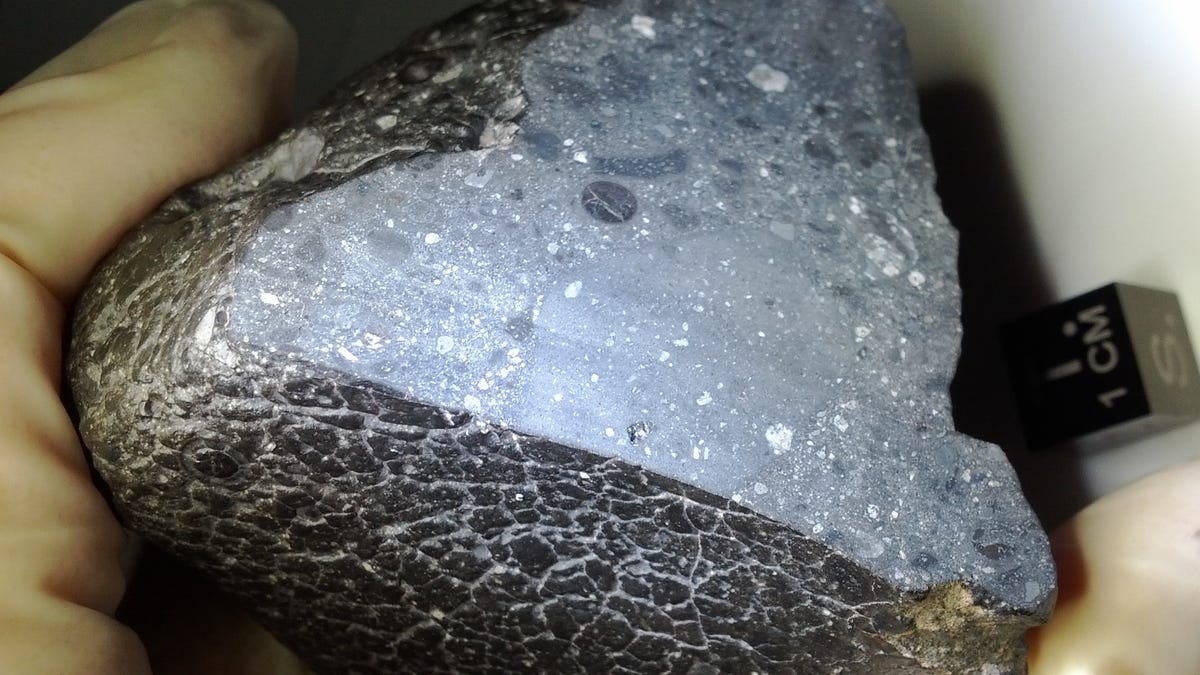Scientists Trace Earth's Most Famous Mars Meteorite to Its Home Crater
The "Black Beauty" Martian meteorite now has a full origin story.
The "Black Beauty" Mars meteorite is a wonder. It was found on Earth in the Saharan Desert in 2011 and given the official name Northwest Africa (NWA) 7034. It earned its nickname from its dark appearance. Much like a superhero, the meteorite has an origin story, which has now been revealed thanks to a supercomputer and an international team of researchers.
We knew Black Beauty's home planet. Now we know its home crater where it got yeeted off Mars by an asteroid impact somewhere around 5 million to 10 million years ago. Lucky for scientists, it landed on Earth.
Karratha Crater was once home to the Black Beauty Martian meteorite.
A study published on Tuesday in the journal Nature Communications details the work of a machine learning algorithm running on a powerful supercomputer at the Pawsey Supercomputing Research Centre in Australia.
The supercomputer analyzed a staggering 90 million impact craters seen in Mars images to locate the crater that produced Black Beauty. A comparison of the age and properties of the meteorite to the craters pointed to just one matching site. The team named the crater Karratha after a city in Australia.
There has been a big focus on the search for signs of ancient microbial life on Mars, but the planet can also teach us about the young days of our own world. "The region we identify as being the source of this unique Martian meteorite sample constitutes a true window into the earliest environment of the planets, including the Earth, which our planet lost because of plate tectonics and erosion," said lead author Anthony Lagain in a Curtin University statement Tuesday.
Initial research dated Black Beauty to 2.1 billion years ago. Another look found that some material in the rock dates back nearly 4.5 billion years. The meteorite is important for its composition as well as its age. "Black Beauty is the only brecciated Martian sample available on Earth, meaning it contains angular fragments of multiple rock types cemented together which is different from all other Martian meteorites that contain single rock types," said Curtin.
In the study, the researchers suggest Black Beauty's hometown could be a good target for exploration. "This province is an ideal landing site for future missions aiming to unravel the first tens of millions of years of the history of Mars and, by extension, of all terrestrial planets, including the Earth."


